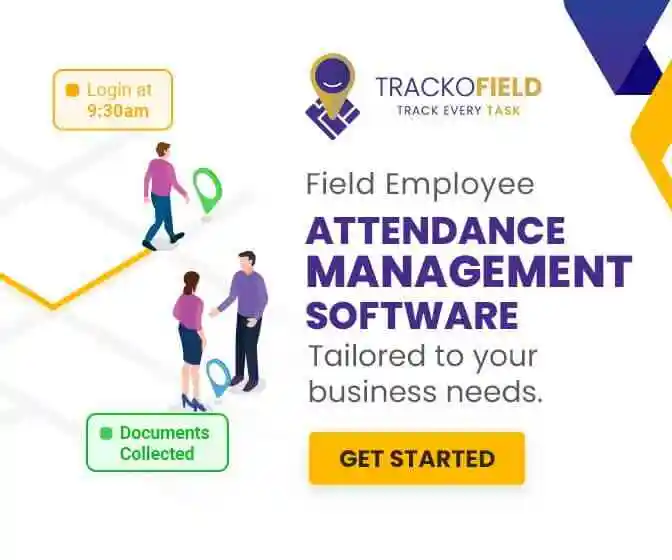-
TrackoBit
Manage commercial vehicles with the new-age Fleet Management Software
TrackoBit -
TrackoField
Streamline your scattered workforce with Field Force Management Software
TrackoField -
Features Resources
-
Blog
Carefully curated articles to update you on industrial trends. -
White Paper
Insightful papers and analysis on essential subject matters. -
Glossary
Explore an alphabetical list of relevant industry terms. -
What’s New
Get TrackoBit & TrackoField monthly updates here. -
Case Study
Explore the cases we solved with our diverse solutions. -
Comparisons
Compare platforms, features, and pricing to find your best fit.
-
About Us
Get to know TrackoBit: our team, ethos, values, and vision. -
Careers
Join the most dynamic cult of coders, creatives and changemakers. -
Tech Support
Learn about our technical support team and services in detail. -
Events
Check out the exhibitions where we left our marks and conquered. -
Contact Us
Connect with us and let us know how we can be of service.
Track These 10 Agri-Input KPIs—Or Risk Losing Peak Season Sales
- Author:Mudit Chhikara
- Read Time:6 min
- Published:
- Last Update: May 6, 2025
Table of Contents
Toggle
Track key field KPIs for agri-input teams to boost agri-sales visibility, productivity, and farmer engagement—even in remote markets.
Table of Contents
Toggle
Agri-inputs sales teams routine is tough!
Field agents face challenges like unexpected costs, seasonal or area-wide variations in agri input demands, inaccessible remote markets, etc.
This can result in difficult performance tracking and data analysis. But worry not! You can solve these issues using key performance indicators (KPIs). Visit planning, farmer onboarding, and orders placed are some common KPIs that agri-input companies must define for their field teams.
Analysing these KPIs helps to streamline workflow and make data-driven decisions like identifying peak time for sales (pre-rabi & pre-kharif months).
Dive in to learn all must-track KPIs for agri-field teams and how field force management can help.
The 10 Field KPIs You’re Probably Not Tracking—And It’s Costing You
Here are the 10 major KPIs that you are not tracking but are survival metrics for agri-input brands. Track them, fix them before the season ends.
1. Visit Planning & Execution
Ensuring field teams are sticking to assigned routes and engaging with the right retailers, dealers, or farmers is the key. Missed visits or deviation from routes can result in lost opportunities and lower visibility.
Thus, it’s important to track:
- Number of dealer/retailer/farmer visits per day
- Number of planned vs. completed visits per day
- Route/beat plan adherence (with location mapping)
- Time spent per visit (too short may indicate superficial interactions)
2. Farmer Onboarding & Data Profiling
Agri inputs are meant to improve crop yield and boost profits of farmers. But not all farmers have the same type of soil or grow the same crops. Some farmers require personalised agri inputs, best suited to their needs.
For this, you need to conduct farmer data profiling. This involves collecting data on their preferred crops, land size, soil type, area weather, etc.
You can also use this data to onboard farmers and provide them with faster, more personalised service and follow-up regularly. Using field force automation can be a great way to simplify farmer onboarding.
How TrackoField helps?
TrackoField lets farmers add their own details using shareable survey forms and simplifies on-ground data collection.
Plus, farmer onboarding can be used as an effective KPI to measure your field teams’ productivity and quality of interactions with farmers.

Farmer Onboarding in TrackoField
3. Field Teams Daily Check-ins
It is important to know what your field agri-input agents are doing. You have to ensure they complete their designated work hours and aren’t faking attendance.
Accurate attendance marking is also important to create timesheets. Now, you wouldn’t want incorrect salary disbursement, right?
Well, with wrong timesheets, it can happen!
So, make sure all your field agri agents reach task sites on time and mark their attendance accurately. You also need to ensure the following metrics are tracked:
- Time and location-based clock-in/out
- Geo-tagged mark-ins to prevent buddy punching
- Working hours and total time spent in the field
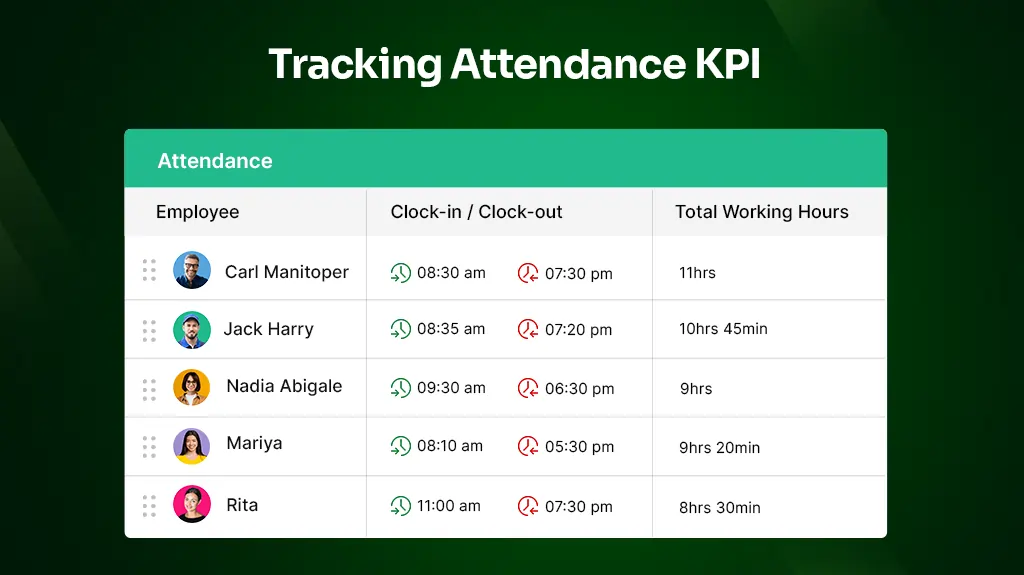
Attendance KPI
4. Conversion by Demo & Trial Activities
Agri input executives carry out product demonstrations to show the use and benefits of various products. For this, larger farmer gatherings are organised and agents demonstrate agri inputs.
Free trials are also offered to farmers so they can thoroughly understand the product’s usage and benefits before buying. Thus, managers have to track the following metrics to measure the impact of demo and trial activities.
- Total farmers converted after demos
- Number of demo sessions conducted
- Farmer attendance and feedback on product trials
5. Sales Order Taking & Fulfillment
Agri inputs carry out marketing and sales task. Apart from onboarding farmers, they also collect orders from dealers or farmers. This is an essential KPI that helps understand market demands and ensure faster order deliveries.
- Total and per-product orders collected
- Order cycle frequency and product-wise demand trends
- Dealer/farmer reorder behaviour
- Alerts for stock-outs or fulfillment issues
- Total Sales and Sales-per-agent
- Orders per city or region
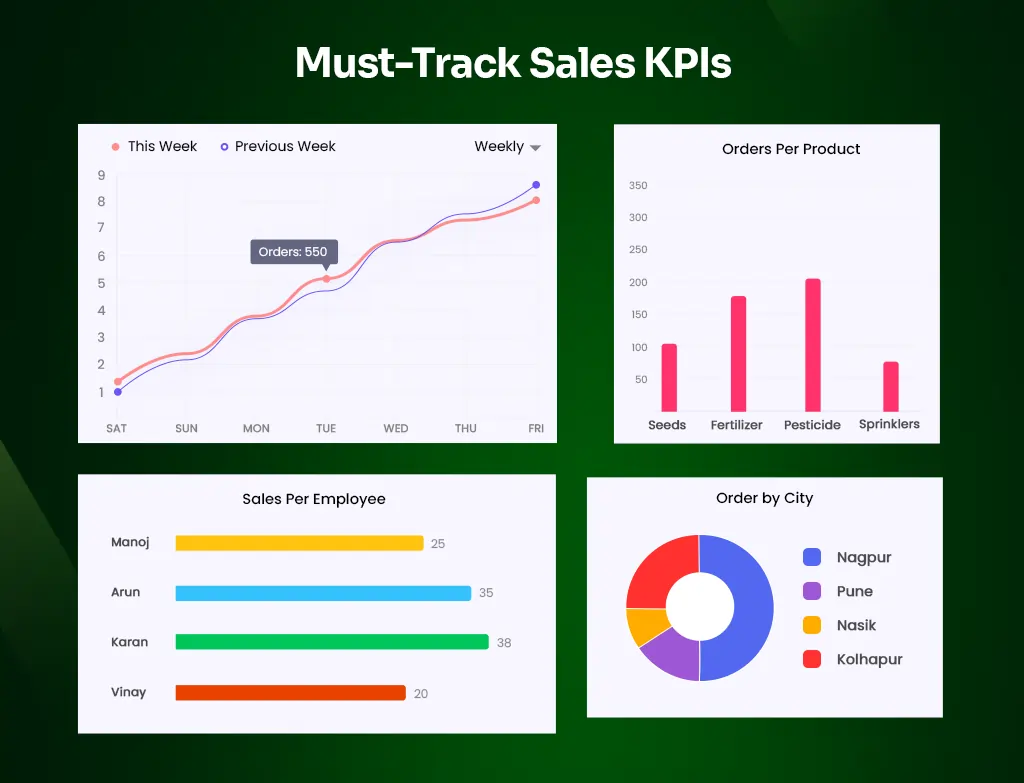
Must-Track Sales KPIs
6. Real-Time Reporting & Notes
Real-time ground activity data can be gathered using field force automation software for agri-input businesses. It allows them to act swiftly in sending tech support, addressing complaints or modifying strategies on the go.
Here is the type of data agri agents collect:
Visit Notes: It includes farmers’ pain points, competition info, crop health, seasonal changes, etc.
Media Files: Voice, video or image based reporting for on-ground conditions like weather, soil, agri input performance,
Custom Forms: To document farmers’ feedback on agri inputs or agent behaviour. Forms also record farmers details for onboarding and profiling.
In addition, managers can also check the live battery & network status of field agents along with compliance KPIs like GPS disabled or airplane mode turned on. Check out some common metrics and KPIs on field service dashboard of TrackoField below.
Tracking KPIs with TrackoField
7. Productivity Metrics
It’s important to measure the output of your agri input teams. It reveals which employees are performing the best, which agents need more support or training and spot any skill gaps. Measuring productivity of agri field teams can be done by tracking:
- Targets vs. actual visits, demos given, or leads acquired
- Conversion ratio: Visits to leads, leads to orders
- Time spent per conversion
- Cost per order (based on fuel, time, manpower)
- Total Distance Travelled Report
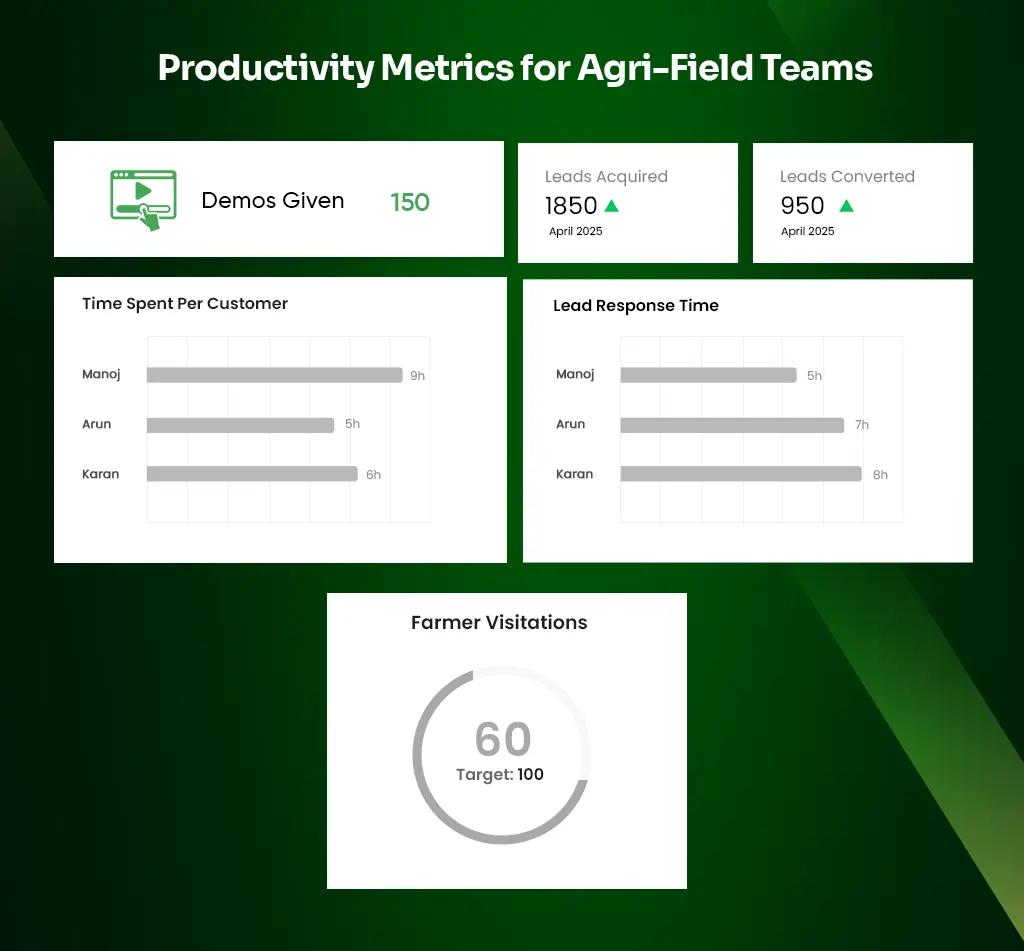
Productivity Metrics For Agri-Field Teams
8. Territory Coverage
Some areas may require extra agri inputs due to various factors. Some areas may need less visits. But how to know that?
Well, using historical data you can better understand which territories need more coverage. But to do that, first you need to record the following data.
- Frequency of visits in various zones
- Heatmaps of covered vs. uncovered areas
- Dealer/farmer density vs. engagement levels
With proper territory coverage, you can ensure equal distribution of agri input teams’ efforts and identify neglected areas.
Manage Efficient Territory Coverage with TrackoField
TrackoField comes with employee GPS tracking software features. In the software’s centralised app dashboard, managers can view the precise location of their field agents.
This data can be used to identify areas with high demand, low demand and the areas which are neglected. Using TF, agri sales managers can better allocate workforce to high-activity areas.
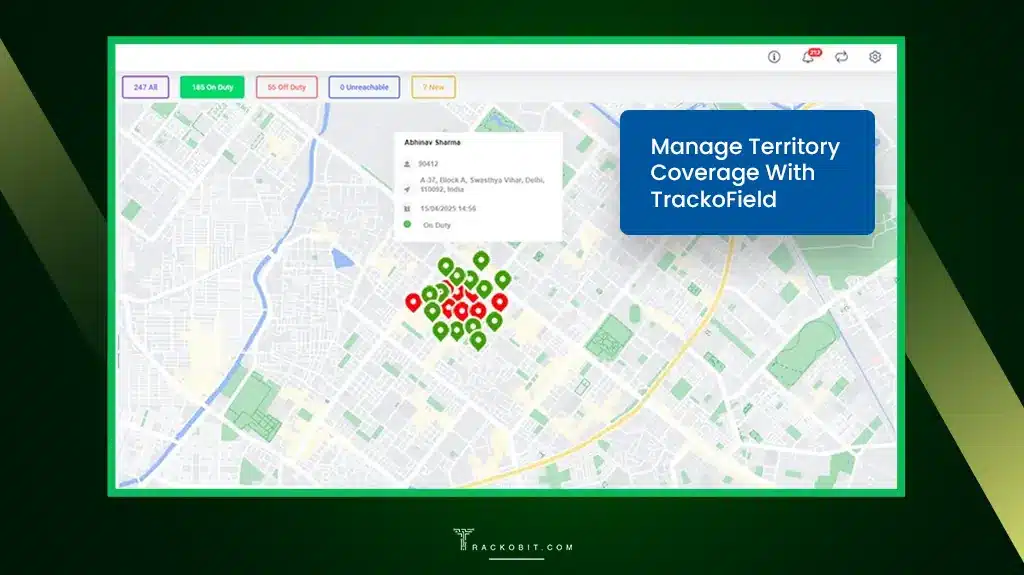
Manage Territory Coverage With TrackoField
9. Collateral Distribution
Quantifying field agri agents’ outreach efforts involves tracking their collateral distribution. This includes the following:
- Brochures, flyers, or product samples distributed
- Digital content shared (via apps like telegram or WhatsApp)
- Farmer/retailer engagement with materials
10. Competition Insights
To beat the competition, first you have to understand the competition.
Are you lagging in areas where your competitors excel?
What are your competitors doing differently?
These are questions you must unravel to gain insight into your competition. In the case of agri-input businesses, this can be achieved by field agents. They can gather data on:
- Brands or products promoted by competitors in the same region
- Farmer or dealers’ feedback about those products
- Discounts or unique schemes being offered by competitors
- Visual evidence (packaging, price tags, banners)
Conclusion
KPIs can make or break your business strategy. Agri businesses in particular need to carefully set and measure KPIs for their field teams. Due to the remote and unpredictable nature of agri sales jobs, it can be challenging to measure employees’ progress.
Consistently tracking KPIs like field teams visits, check-ins, farmer onboarding & sales helps gain insight into the agri market and lets managers make smarter decisions, optimise resources and build stronger relationships with farmers.
Want to stay on top of these KPIs, we recommend using TrackoField made for agri-input use cases.
FAQs
-
How does field sales automation benefit agri input companies?
Field sales automation helps agri input companies set, define and track KPIs easily. This helps gain market insights and analyse farmers’ demands, which results in better decision making and improved field teams’ productivity.
-
How to track field sales reps in agri-input sector?
Agri field sales reps can be tracked by adopting field force automation tools with features like live field reporting, location & activities, farmer visits tracking, sales orders and attendance tracking, etc. This is possible by using a field force automation solution with dedicated GPS location tracking, farmer onboarding and order placement modules.
-
Can I track agri field reps without internet connectivity?
Agri-inputs promoting/selling agents can be tracked even when offline using a field employee tracking solution. It allows agri reps to create and complete tasks offline. They can also mark their attendance. The data is synced once connectivity returns.
Mudit is a seasoned content specialist working for TrackoField. He is an expert in crafting technical, high-impact content for Field force manage... Read More
Related Blogs
-

Unified Field Workforce Dashboard: Monitor Tasks, Attendance & More In One Place
Mudit Chhikara December 15, 2025Bring full clarity to field operations with a single, real-time field workforce dashboard.
-

Loan Disbursement in NBFCs: From 15 Days to 3 Minutes – Learn How
Shemanti Ghosh December 11, 2025TrackoField’s AI-enabled field force automation software speeds up loan disbursals in NBFC with field agent task monitoring and facial attendance…
-

AI Facial Recognition Attendance: A Game-Changer for Fraud-Free Field Operations
Mudit Chhikara December 9, 2025Ensure transparent attendance and eliminate fraud before it even starts with AI facial recognition and geofencing.
-
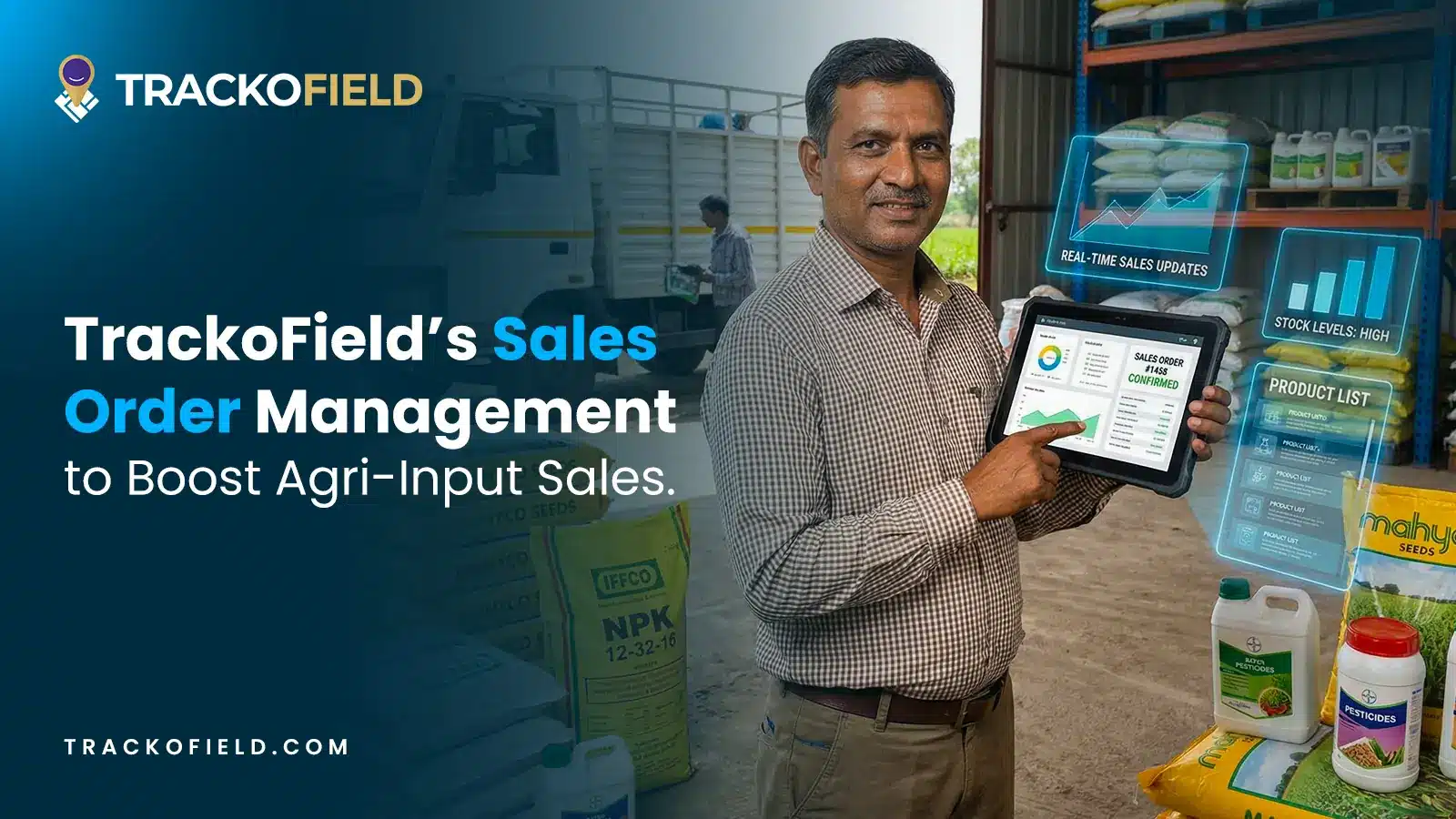
Boost Agri-Input Sales Efficiency with TrackoField’s Sales Order Management Module
Shemanti Ghosh December 3, 2025Grow Agri-input sales and expand farmer database with TrackoField’s Sales Order Management module.

Subscribe for weekly strategies to boost field team productivity.
Your inbox awaits a welcome email. Stay tuned for the latest blog updates & expert insights.
"While you're here, dive into some more reads or grab quick bites from our social platforms!"Stay Updated on tech, telematics and mobility. Don't miss out on the latest in the industry.
We use cookies to enhance and personalize your browsing experience. By continuing to use our website, you agree to our Privacy Policy.


































